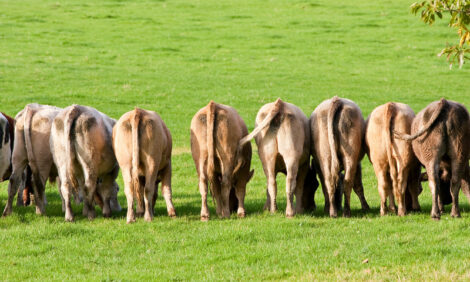



Autumn's Time to Address Soil Compaction
EBLEX - Autumn is usually the best time to use aerators or sward lifters, giving the soil and roots time to recover before spring. However, an assessment of soil structure is essential to justify their use.The end of the summer is a good time to assess soil structure, when soils are not too dry or too wet, which makes it difficult to see the signs of poor structure.
Problems which need addressing can then be tackled before winter, providing the soil is in the right condition for the machines to work effectively, without causing smearing or further compaction.
However, in cases of mild compaction, soils do have a capacity to recover and it may be worth monitoring the soil over a period of several months to see if it improves. A quick way to track soil condition is to take photos on a phone.
Natural improvements are more likely to come when clay soils crack in dry conditions or when frost heave occurs during colder periods and when the cause, which can be stock or machinery, had been removed. Plants with deep roots can also help improve soil structure, as will worms.
When the soil damage is severe with large areas compacted, action will be needed. However, it is important to ensure the depth of compaction is correctly identified so it is effectively addressed. For example, there is no point in using an aerator to tackle compaction below 15cm.
Soil assessment has become a hot topic in recent years. Although this is quite simple for farmers to do, it has been over-complicated due to the number of different methods used.
To address this, EBLEX and Dairy-Co have funded a project called ‘Healthy Grassland Soils’, which has developed a single industry-agreed four-step method and a scoring system, with each score having clear management guidelines. The system is based on previous work by SRUC and ADAS.
The four steps are:
1. Surface assessment – rated as good, moderate or poor
2. Soil extraction – digging a spade-sized hole
3. Soil assessment – breaking up the soil block and identifying any layers with compaction
4. Soil scoring – assigning a score of one for good to five for the poorest, based on the above three steps and photos. The depth of the limiting layer is also recorded
The simple scoring system makes it easy to record and monitor soils, as well as decide when each field next needs assessing and which to prioritise for action.
Full details on how to complete soil assessments and the management options relating to each score will be available by mid-October and will be discussed at nine joint EBLEX and Catchment Sensitive Farming-sponsored events. See www.eblex.org.uk/events for more details.
Further information is available in the EBLEX briefing on dealing with compaction, available to download from www.eblex.org.uk.
| TheCattleSite News Desk | Read more EBLEX News here |


